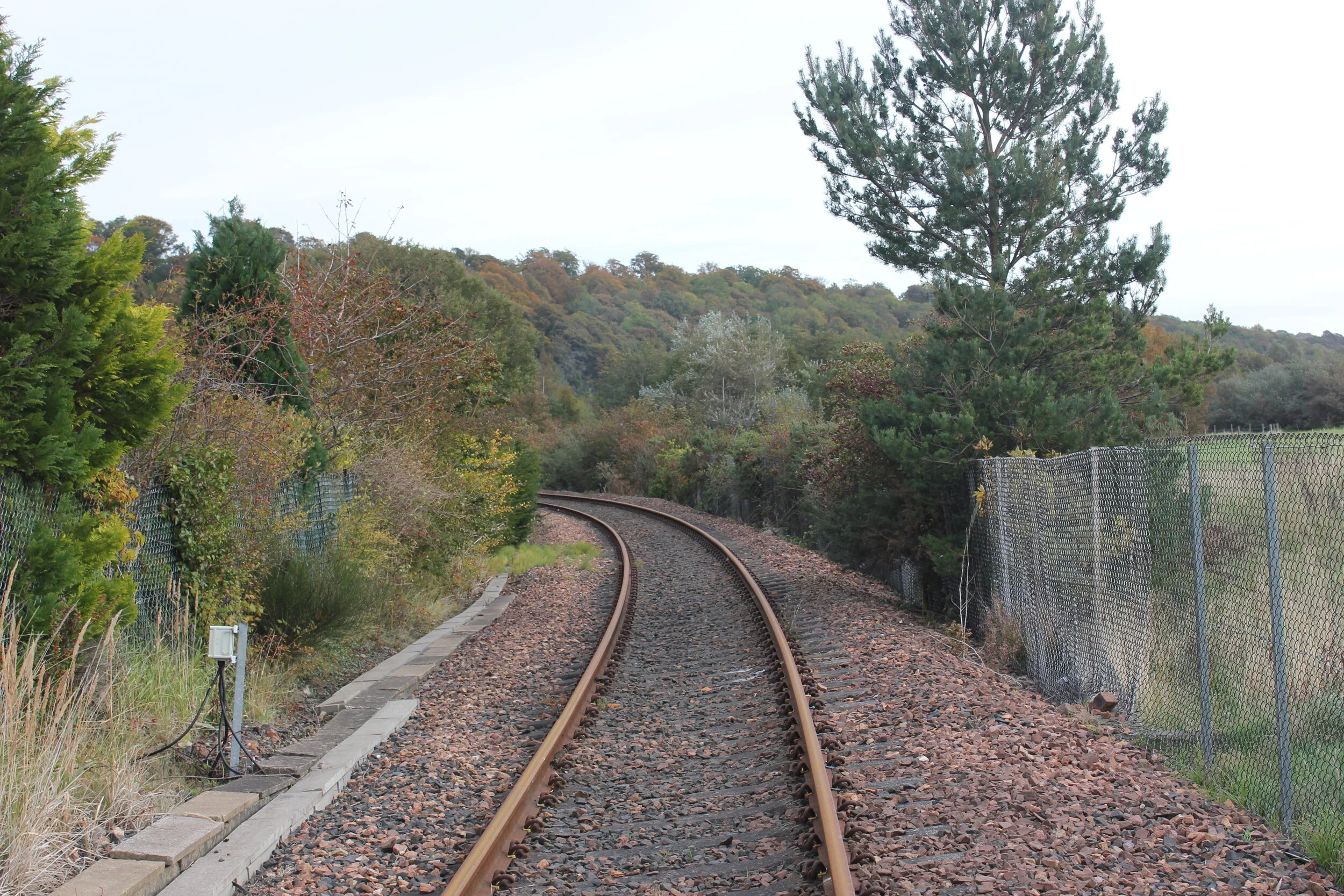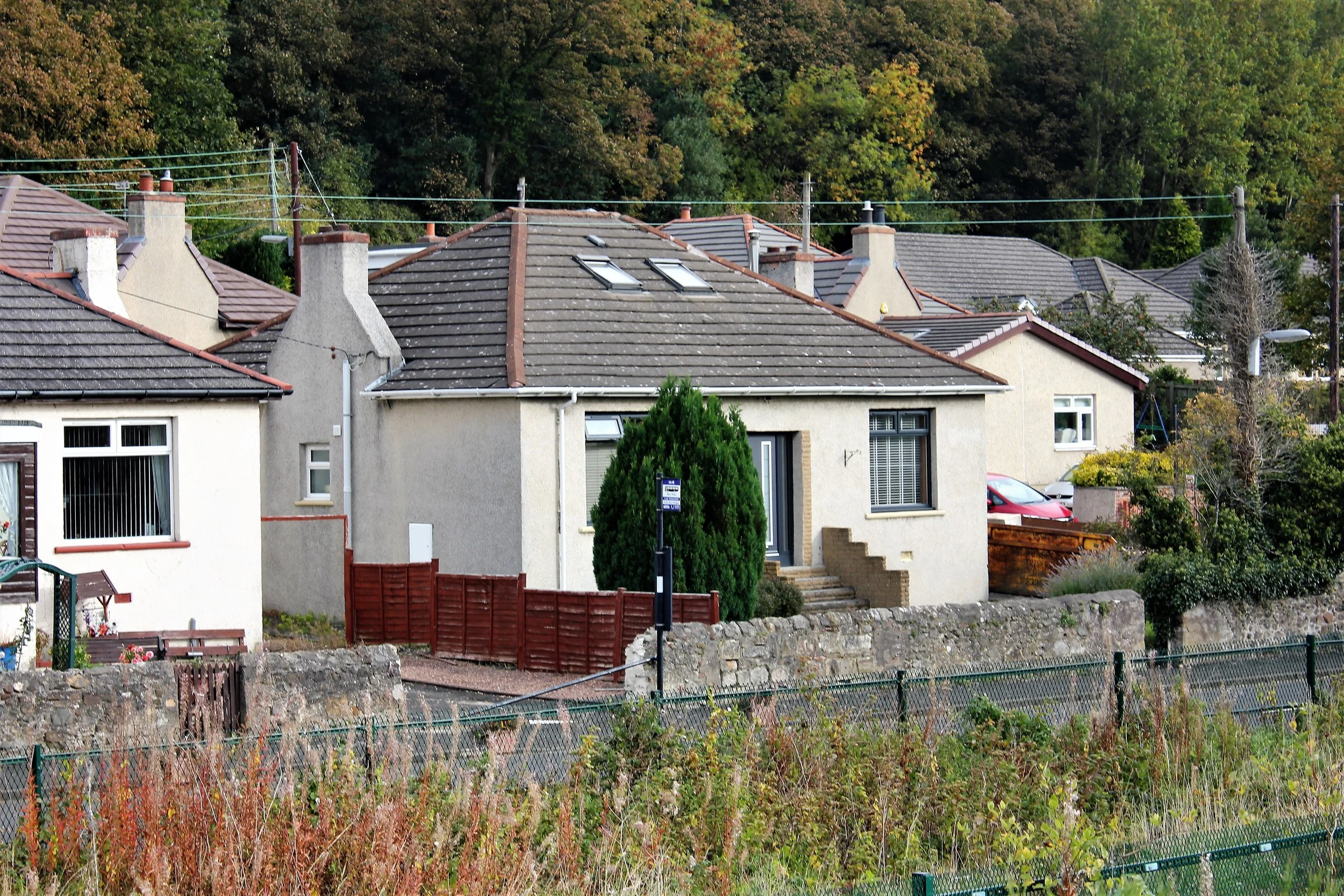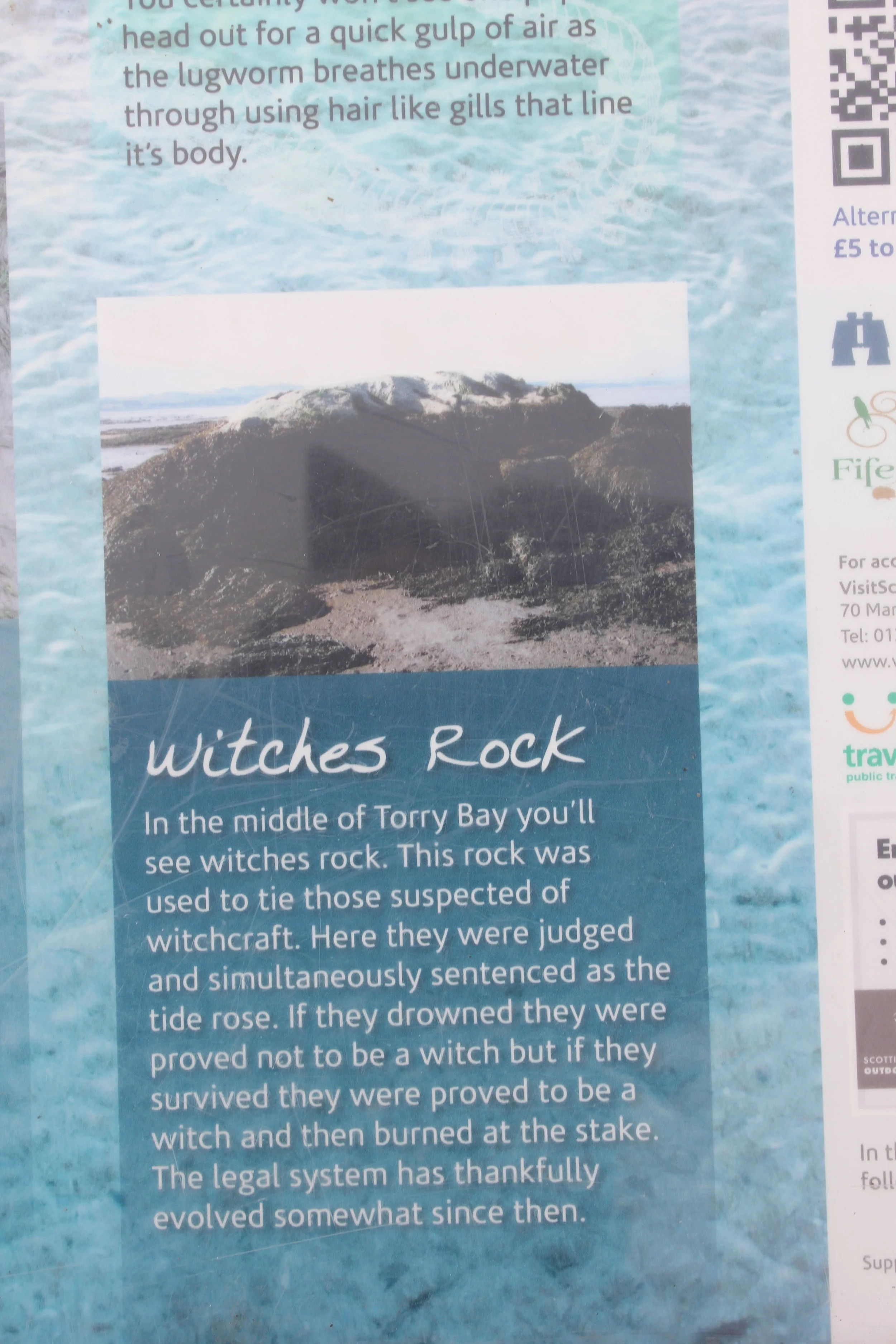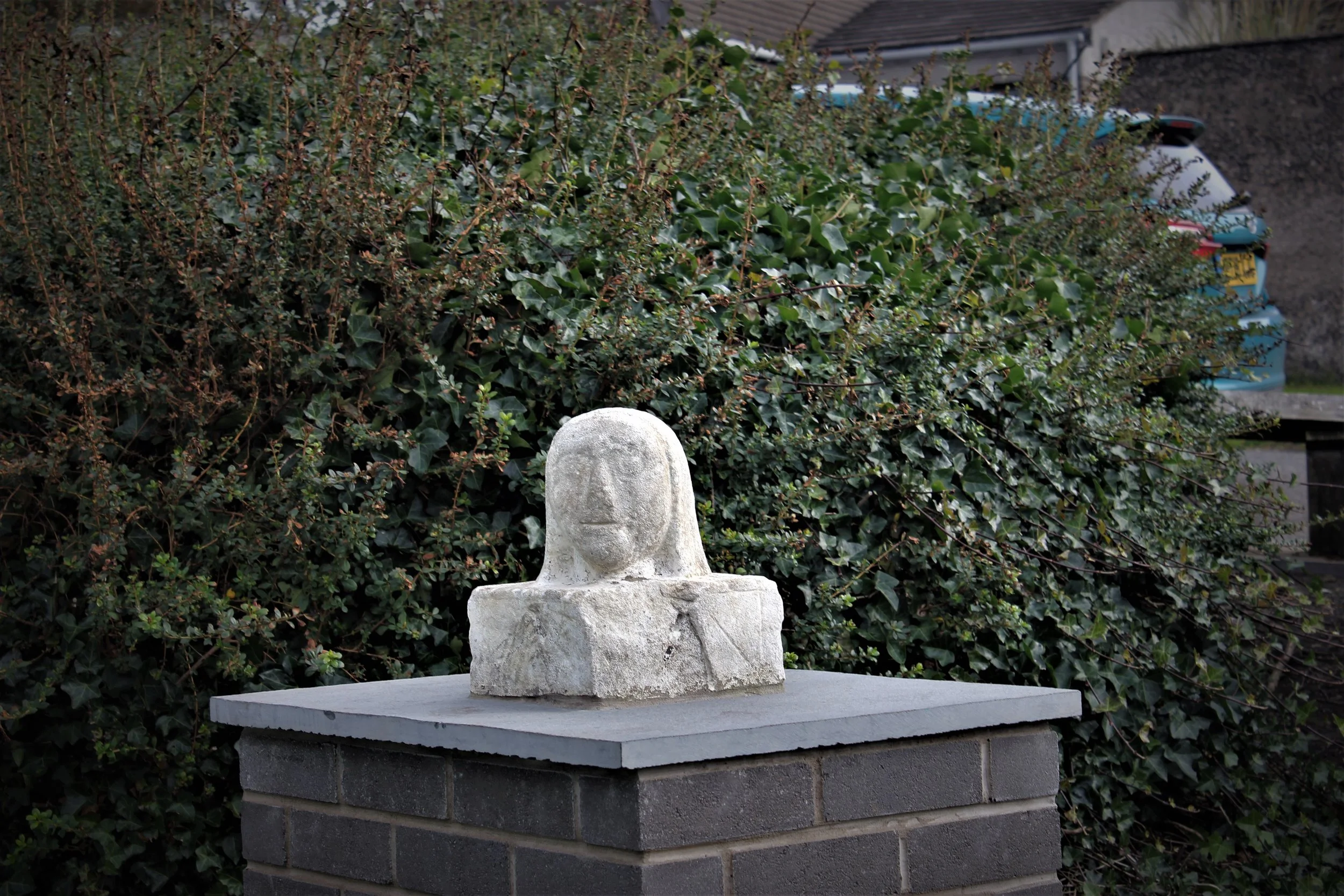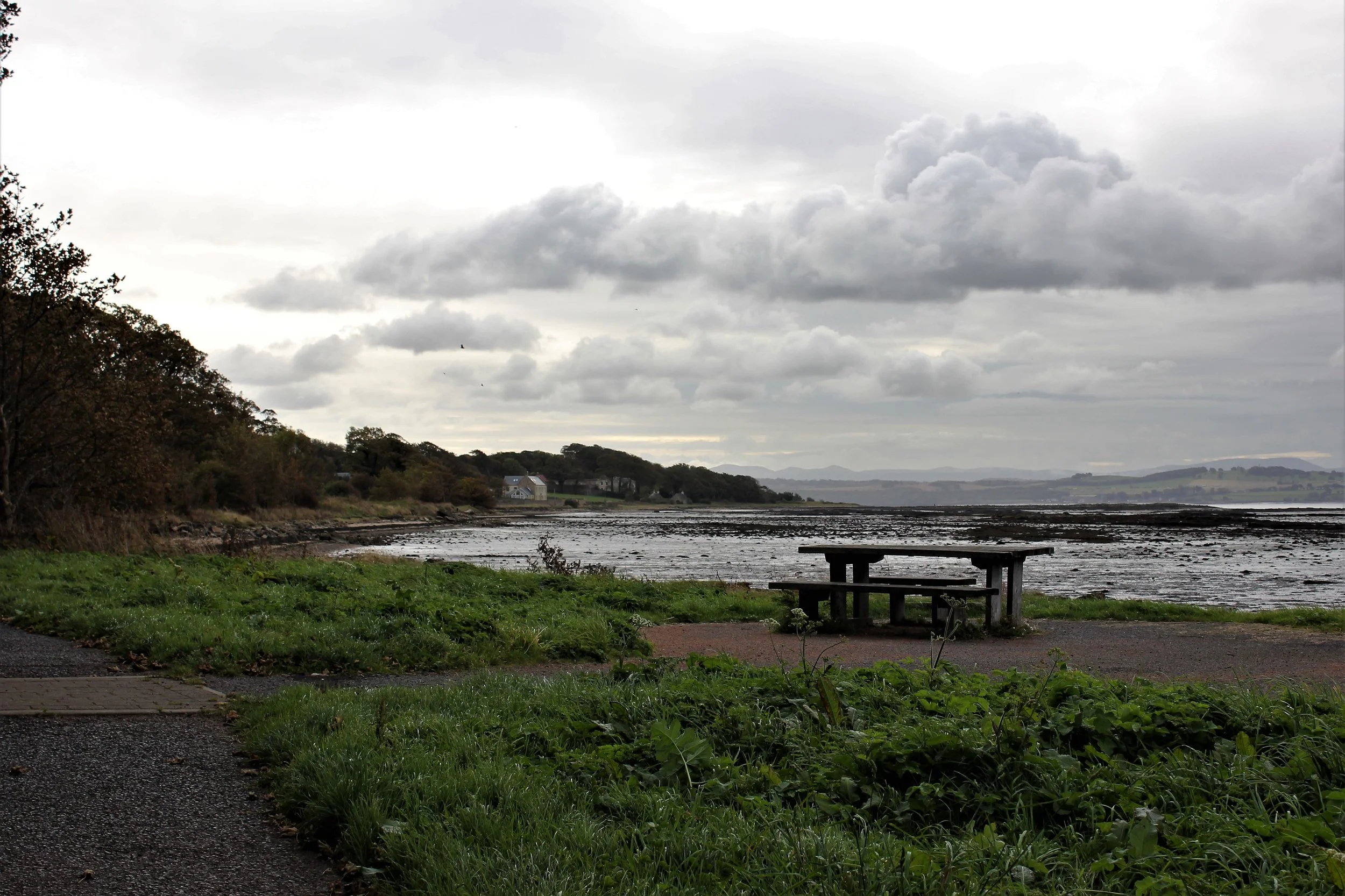THE FIFE COASTAL PATH
PART 2
CULROSS TO TORRYBURN
Culross is now a picturesque village, much visited, most pleasant. Well preserved. We can easily miss that, once upon a time, it was an industrial hot-spot and that it is as it is now because commerce and industry have moved on past Culross. Walking the path out of Culross along the sea wall means walking through the remains of recent and less recent industry. Real industry: heavy stuff, coal mining stuff, poverty. Hopefully those villages will become as attractive in their own way in the future
The FCP and the Fife Pilgrim Way (see the Pilgrim Way Part 2) share the same route to Torryburn where they part ways.
The FCP/FPW crosses the railway and takes the path to the south of the railway and to the north of the ash lagoons. It is well-walked, not least because dogs love it. Funny thing about dogs: some like you, some ignore you but rarely do they menace. Me? I like them. It struck me that I should be taking photos of dogs and taking names so i could put them on a website. Unfortunately, these days there would be a concern about me being a prospective dog-napper sussing out a victim. But again, some of the warmest conversations are held over a friendly dog.
Our history has led us to the point we are at now. The unintended memorials that are left of our industrial past are writ large along the path I am walking. In Fife the coalfields ran along the coast from Longannet to Crail. A source of work and wealth.
The rich man in his castle,
The poor man at his gate,
God made them high and lowly,
And ordered their estate.
Two roads diverged in a wood, and I
I took the one less travelled by,
And that has made all the difference
The Bus Stop below is significant. Walking in Scotland in many places is supported by easy access to buses. In my experience walking is greatly enhanced by a pure dead brilliant public bus service and makes long distance paths accessible by the availability of excellent buses. In the case of the Fife Coastal Path, Fife Buses are great, particularly if you possess the Senior Citizens Bus Pass thingy, which I do. Cos I’m knocking on a bit.
In years past, Neil and others have made great use of the buses and our travel passes. Most recently, I used Fife Buses on the Fife Coastal Path route, and it was brilliant. Usefully, Fife has standard bus stations which are helpful and comforting. (BTW, we’d also made great use of buses south of the Forth and through to Helensburgh whilst on the John Muir Way). The Fife Bus stations have about three different sizes, but basically the same layout. They have toilets (warm, comfortable), and the larger ones have a cafe (the folks in the Kirkaldy Cafe are really friendly). All the Bus stations have small shops for sweeties, fags and newspapers. You know where you stand with Fife Buses. So the photo of the bus stop is a reminder. You’re never lost with a Fife Bus route.
Bus Stop, Low Valleyfield.
At the (original) time of writing there was a bit of potential waymarking cock up going on. The Pilgrim Way and the Coastal Path are one and the same until the railway bridge is passed. However at the bottom of the first down flight of steps down (A)the FPW turns right down another flight. At the bottom is another FPW marker (C). You just can’t really see it from the top. As a consequence we, Neil and I both, struggled to find a non-existent FPW badge at (B). Turns out that it was lurking in an alley way. Or is that a pend….?
The Fife Coastal Path and the Fife Pilgrim Way are the same approaching Torryburn, but deviate in detail at Torryburn. The FCP and the FPW part ways about half way along the pathway at the edge of the water (return to the FPW part 2 in the website main menu to follow that route).
LDW’s through Newmills and Torryburn
The route passes over the Bluther Burn (which smells) into New Mills and turns right to follow the coast to where Low Torry turns into Torryburn. The Fife Coastal Path takes you through Low Torry past The Crown in the main street.
The Crown is worth a mention. A feature of the Fife Coastal Path is that it has many memorials to people, usually family, usually looking out to sea. The Crown was the first that really hit me. Very often the memorials are benches, on favourite spots, often overlooking the Forth, sometimes with pictures, or small plaques. Usually they have words. The Crown has a bench remembering Derek.
I don’t know anything much about Derek, apart from he ran the pub and the locals loved him. He is remembered, and that is important. I am touched by this kind of memorial: it values peoples’ lives and existence life. So I tend now to at least stop and read these small memorials on the Way. Least I could do.
The personal memorials, often on benches, sometimes just stones, sometimes flowers and small gifts, are a constant occurence on the Coastal Path. It is important to remember. Isn’t it?
Both the FCP and the FPW pass under the railway bridge
The Witches Rock sculpture
The Witch sculpture is at the corner of the green which leads along the northern foreshore of the Forth, leading to the ruins of Crombie Old Parish Kirk.
Ruins like Crombie Old Church usually have a fascination, something about the people doing the building didn’t see them like they are now. The passions and imperatives that drove the creators are lost. things change.
In another time, the Kirk will have been a focal point in a community. Those days are past now: the place will have had meaning and life, but now only stones remain.
As a young teenager, the Ring of Bright Water film and book inspired dreams of wandering and living that stuck with me. It partly explains why I, born and brought up in England have ended up in Scotland. I dreamed of heading for the highlands and living by the sea like Gavin Maxwell. Leaving school in 1974, I toured Scotland for a week with four friends, driving through the hills, camping. Finding the midges. Getting wet. Later, I toured Scotland with my Dutch friend Gerke in 1978, and it was good again. I returned to Scotland to live in 1981 and Scotland became home.
My father-in-law always said that I knew more about Scotland than most Scots. I probably know different things
The view from Crombie Old Kirk looking towards the Pentlands.
The path takes the hill up past the kirk on a good path past a wedding venue. And then a bit of walking the footpath.


